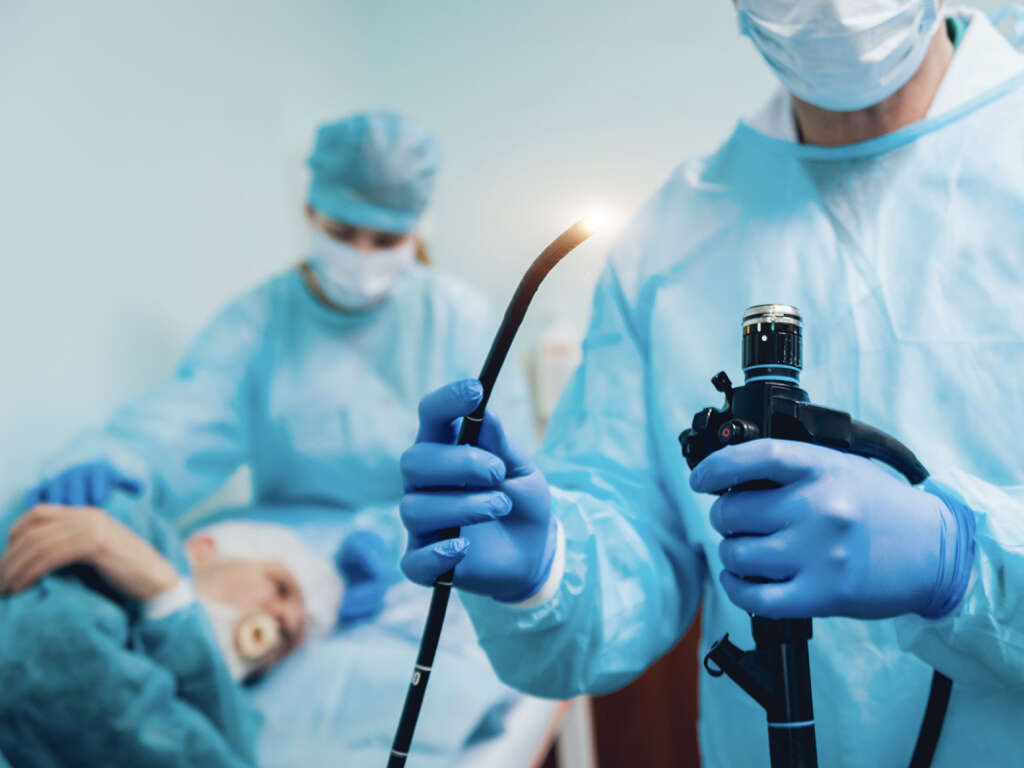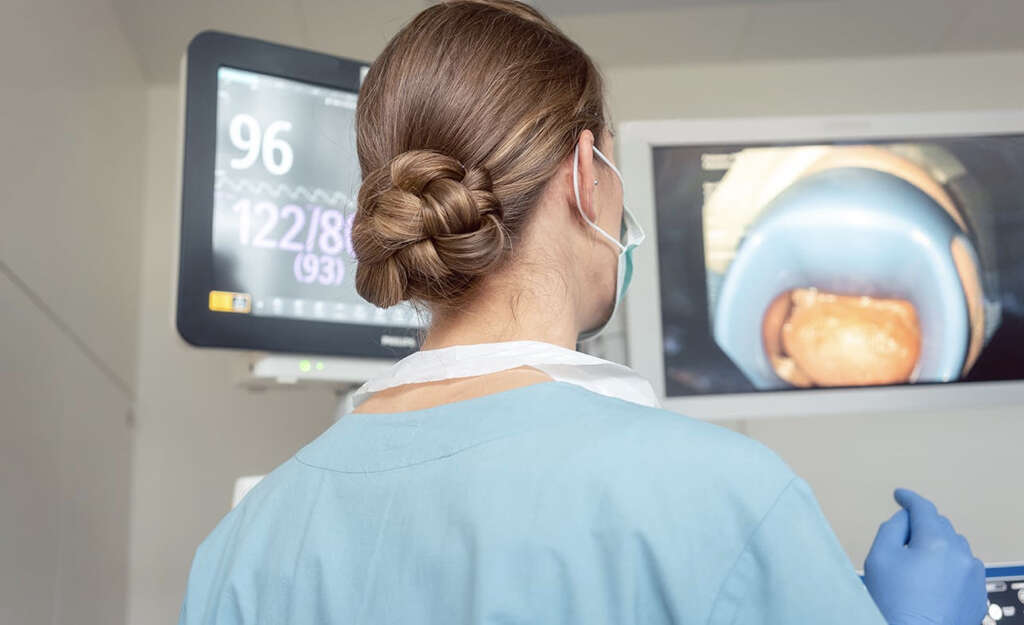What Is an Endoscopy?
When you visit a doctor, they will usually take a look at your body on the outside for clues as to what might be wrong. This will often not give them sufficient information, and they may need to investigate further to get to the root of the problem.
Sometimes, this might mean blood tests and/or x-rays that reveal more information about what is going on inside the body. In other cases, the professionals may want a closer look still, and this can mean inserting a camera directly into the body. This is a procedure known as an endoscopy, and it is performed relatively often.
1. Endoscopes
An endoscope is a long, thin tube that has a camera attached to the end, along with a light that will allow medical professional to visualize what is happening inside the body. It is inserted into the body through an orifice and is pushed in to examine the interior of a hollow organ or cavity of the body. The images from the camera are transmitted to a screen where physicians can observe what is happening in real time. With high-quality images, professionals are able to clearly identify any problem and arrange for treatment accordingly. A wireless capsule endoscopy is a similar procedure that involves the patient swallowing a small capsule containing a light and camera.
2. Preparation
An endoscopy is a fairly straightforward procedure, so you won’t need to prepare a great deal. The professionals will let you known in advance if there is anything that you need to do. In some cases, you may be asked not to eat for several hours before the procedure to prevent food obstructing the view.
Depending on what they are looking for, you might also be given a laxative to help clear the bowels. In some instances, antibiotics might be given in order to help prevent an infection. You might also need to stop taking certain medications, but your doctor will be able to inform you which ones to stop, if any.

3. Medications for procedure
Sometimes, during an upper gastrointestinal endoscopy, a topical anesthetic can be applied to the throat of the patient. Also, a sedative is often administered by intravenous injection right before the procedure begins. Note that the patient is sedated, but still conscious. Sedatives used in endoscopy have many advantages, including safety and effectiveness.
They decrease the patient’s anxiety towards the procedure and reduce gagging during the introduction of the endoscope. However, some disadvantages of the use of these medications include the need for a period of recovery after their administration (usually an hour) and rare adverse reactions to the drugs. Moreover, most procedures will usually take between 15 and 45 minutes. In most cases, the patient will be able to return home on the same day the procedure is performed.
4. Insertion Point
As mentioned, the endoscope will be usually inserted into an orifice. Endoscopes usually reach their target area by entering through the mouth (i.e. gastroscopy, bronchoscopy), anus (i.e. colonoscopy), urethra (i.e. cystoscopy), among others. The point of entry used will depend largely on where the suspected problem is in the body.
In some cases, an endoscope will be inserted through a small incision in order to perform minimally invasive surgery (also known as keyhole surgery or laparoscopy). Arthroscopy is a great example of a minimally invasive surgical procedure, where a specialist uses an arthroscope to examine the inside of a joint and treat a specific lesion (if necessary).

5. Upper gastrointestinal endoscopy
Upper gastrointestinal endoscopy, also known as esophagogastroduodenoscopy (EGD) is a procedure where a flexible endoscope is introduced through the mouth, allowing the visualization of the oropharynx, esophagus, stomach, and proximal duodenum.
This procedure allows for real-time assessment and interpretation of the findings, assisting in the diagnosis of multiple conditions. Some indications for EGD are the diagnostic evaluation of upper gastrointestinal symptoms (i.e. indigestion or dyspepsia, difficulty swallowing, chest pain, or recurrent vomiting), surveillance for gastrointestinal cancer in high-risk conditions, procurement of tissue samples (biopsy), and therapeutic intervention (i.e. removal of foreign bodies or tumors, hemorrhage control, dilatation of stricture).
6. Colonoscopy
A colonoscopy is an endoscopic procedure that is used to inspect the entire large bowel, from the distal rectum to the cecum, and the distal part of the small bowel (terminal ileum) with the use of an endoscope (a special camera on a flexible tube) that is advanced through the anus.
It is used both diagnostically and therapeutically and permits the examination and treatment of many conditions of the lower gastrointestinal tract. Indications for colonoscopy include the screening, assessment, and follow-up of colorectal cancer (CRC); management of IBS (ulcerative colitis and Crohn’s disease); and assessment or treatment of acute hemorrhages. Recommendations for CRC screening in average-risk patients, state that screening should start at age 50 years. This screening procedure should be repeated every 10 years.

7. Cystoscopy
A cystoscopy is an endoscopy of the urinary bladder that is carried out with a cystoscope via the urethra (the tube that carries urine from the bladder to the outside). This procedure is performed for diagnostic purposes such as evaluation of congenital anomalies, voiding symptoms, gross or microscopic blood in the urine, fistulas (abnormal connection between organs), and procurement of samples.
Therapeutic purposes include treatment of strictures (abnormal narrowing of the urethra), and bladder procedures (i.e. treatment of bladder stones or tumors).
8. Other Organs
An endoscope can be used in pretty much any place experts can gain access to. Accordingly, another relatively common procedure is a bronchoscopy. This is performed when a pulmonologist inserts an instrument (bronchoscope)via the mouth inside the airways to visualize them for diagnostic and therapeutic purposes.
Common indications for a bronchoscopy are a persistent cough, something unusual on a chest radiograph or test, or infection. It is also used to obtain samples (tissue or mucus), to remove foreign bodies, or to provide treatment. Furthermore, hysteroscopy, or the inspection of the uterus by endoscopy, can also be performed. This study is diagnostic and therapeutic as well. Indications for hysteroscopy include abnormal uterine bleeding, removal of intrauterine devices or other foreign bodies, and more.

9. Risks
An endoscopy is usually a fairly straightforward procedure and it is not at all common for problems to occur. As with pretty much every other type of medical procedure, however, it is not completely without its risks. In some cases, the use of the endoscope can cause a tear in the delicate internal tissues and this may need to be repaired.
In other cases, the endoscope may introduce pathogens into the body, resulting in an infection (i.e. infectious endocarditis). The use of sedatives and anesthetic can also result in other complications, but this is also rare. If the patient is experiencing unexpected side effects after the procedure, then it will be a good idea to speak with a medical professional.
10. Recovery
As mentioned, an endoscopy is a straightforward procedure and the patient will not usually be expected to stay overnight in a hospital. It is not completely without discomfort, however, and the patient may need some time to recover from the experience.
A lot of people will need some time to rest after the procedure, largely because of any sedatives used. It is a good idea if the patient has somebody with them to help them return back home once they leave the hospital. The patient might also be feeling a little sore, and they should try to take it easy for the rest of the day at least.











